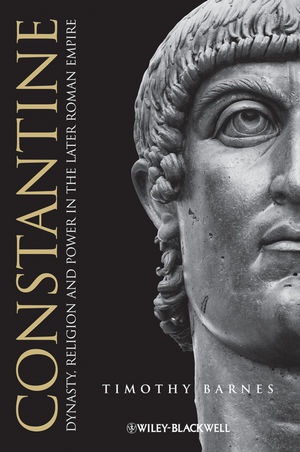Read more
Drawing on recent scholarly advances and new evidence, Timothy Barnes offers a fresh and exciting study of Constantine and his life.
* First study of Constantine to make use of Kevin Wilkinson's re-dating of the poet Palladas to the reign of Constantine, disproving the predominant scholarly belief that Constantine remained tolerant in matters of religion to the end of his reign
* Clearly sets out the problems associated with depictions of Constantine and answers them with great clarity
* Includes Barnes' own research into the marriage of Constantine's parents, Constantine's status as a crown prince and his father's legitimate heir, and his dynastic plans
* Honorable Mention for 2011 Classics & Ancient History PROSE award granted by the Association of American Publishers
List of contents
List of Illustrations ix
Preface x
Abbreviations xii
1 Introduction 1
Official Lies and the 'Constantinian Question' 2
The Progress of Historical Research 6
Contemporary Perspectives on Constantine 8
Coins, Inscriptions and Monuments 16
2 The Soldier and the Stable-Girl 27
The Social Status of Helena 30
The Marriage of Constantine's Parents 33
Constantius' Second Wife 38
The Later Life of Helena 42
3 Constantine, the Ruins of Babylon and the Court of Pharaoh 46
The Diocletianic Tetrarchy (293-305) 46
The Appointment of New Emperors 49
Constantine in the East (293-305) 51
The Dynastic Coup of 305 56
4 The Road to Rome 61
Constantine's Proclamation and Recognition as Emperor 62
Politics and Warfare 306-310 66
The Vision of Constantine 74
The Invasion of Italy 80
Constantine in Rome and Christmas 312 83
Constantinian Churches in Rome 85
Appendix: The Status of Constantine 306-311 89
5 Brothers-in-Law 90
Constantine and Licinius in Milan 90
Was there an 'Edict of Milan'? 93
Towards War 97
From Cibalae (316) to Chrysopolis (324) 103
6 The Transformation of the East 107
The Foundation of Constantinople 111
An Imperial Sermon 113
The Council of Nicaea 120
A Christian Capital for a Christian Roman Empire 126
Pro-Christian Legislation 131
Constantine and Ecclesiastical Politics 140
East and West in the Fourth Century 142
7 Dynastic Politics after the Council of Nicaea 144
The Deaths of Crispus and Fausta 144
A Third Wife for Constantine? 150
The Organization of the Empire 153
Constantine's Dynastic Plans 163
An Astrologer's Praise of Constantine 168
Tables: Dynastic Alliances and Children of Emperors 285-337 170
Appendix: The Dynastic Marriages of 335 and 336 171
8 Epilogue 173
Appendix A: The Career of Lactantius 176
Appendix B: Galerius' Sarmatian Victories 179
Appendix C: The Panegyrici Latini and Constantine 181
Appendix D: Eusebius, On Easter (De Sollemnitate Paschali) 185
Appendix E: Nicagoras in Egypt 192
Appendix F: Praxagoras of Athens 195
Appendix G: An Anonymous Panegyric of Constantine 198
Notes 201
Bibliography 226
Index 254
About the author
Timothy David Barnes is Professor Emeritus of the University of Toronto. He is the author of
Constantine and Eusebius (1981),
The New Empire of Diocletian and Constantine (1982),
Athanasius and Constantius: Theology and Politics in the Constantinian Empire (1993),
Ammianus Marcellinus and the Representation of Historical Reality (1998), and
Early Christian Hagiography and Roman History (2010).
Summary
Drawing on recent scholarly advances and new evidence, Timothy Barnes offers a fresh and exciting study of Constantine and his life. Constantine: Dynasty, Religion and Power in the Later Roman Empire clearly sets out the problems associated with depictions of Constantine and answers them with great clarity.
Report
"This fine book is a significant achievement in a fertile era of Constantinian studies." (Ecclesiastical History, 1 July 2013)
"I would recommend a careful reading of this book to anyone who wants to discover what we really know about Constantine." (Open House, 1 April 2012)
"Summing Up: Essential. Upper-division undergraduates and above." (Choice, 1 January 2012)

